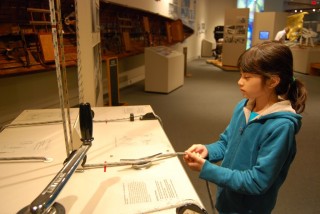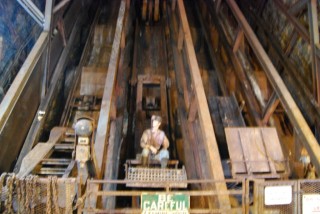Category: Uncategorized
Going for Gold
Like many of you, I’ve been sitting on my couch each night, mesmerized by display after display of Olympic achievement. Whether watching Michael Phelps sweep the all-time Olympic gold record or Gabby Douglas wow the judges on bars, I have this distinct thought: there’s no way, given an eternity to train, that I could accomplish such feats. These Olympians are super-human —they venture beyond the beyond.
 Maybe I’d publish a whole book of poems. Check. Maybe another prize? Check. Maybe the biggest prize? Check. But there’s more How about a whole new genre?! Why not write for children? Of course, I’d be satisfied with ONE picture book, right? That’s the new gold standard. Then I’d let my surf board glide into shore. But wait! There’s the Olympics.
Maybe I’d publish a whole book of poems. Check. Maybe another prize? Check. Maybe the biggest prize? Check. But there’s more How about a whole new genre?! Why not write for children? Of course, I’d be satisfied with ONE picture book, right? That’s the new gold standard. Then I’d let my surf board glide into shore. But wait! There’s the Olympics.Eternally Optimistic
Like many of you, I have children who are polar opposites. One daughter sees the world through a half-empty glass; the other sees her cup as overflowing. This doesn’t mean that rain can’t fall on her, but when it does, she’ll grab an umbrella and jump wildly through the puddles. I admire this about her. She wakes up and seizes the world with both hands. My desire is to emulate her. This applies to many aspects of my life, but often to writing. You see, what I’ve observed about this eternal optimism of hers is that she seeks and searches for joyful things–objects of hope and delight, security and beauty. See, this is the ceiling of her bedroom–cranes stretch across it, butterflies dance around her windows.
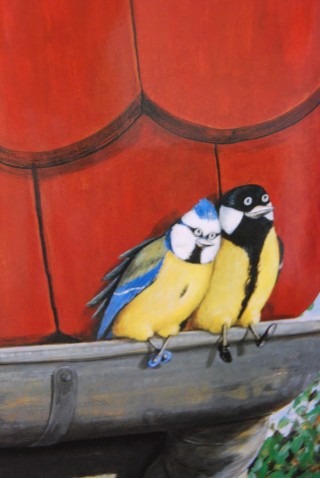 And lastly, I discovered this card in a gift shop in Fort Myers. I envision two of my characters, Champ and Scooter, to look just like this. And yes, these objects may be a silly pipe dream but, like my daughter, I’ve chosen to believe in their future. Perhaps these “Hope Builders” will come to life someday through their very words. Just wait and see
And lastly, I discovered this card in a gift shop in Fort Myers. I envision two of my characters, Champ and Scooter, to look just like this. And yes, these objects may be a silly pipe dream but, like my daughter, I’ve chosen to believe in their future. Perhaps these “Hope Builders” will come to life someday through their very words. Just wait and see
Split Personality
Some days I am a librarian at the Morrill Memorial Library in Norwood, Massachusetts. Some days I am an author who visits schools and attempts to pen a few words around midnight when the house is quiet. As a mother, wife, author, librarian, wannabe knitter, pathetic scrapbooker, amateur photographer (the attached photos don’t count…they were from my cell phone, for crying out loud), I am always tired. BUT, on rare days like today, my two hats blend.
Today I was at MLA’s (Massachusetts Library Association’s) Conference, and I was able to meet six fabulous authors from our fine state. We “Speed-Dated,” i.e. we had four minutes to talk with each author in rotating fashion.
I want you to meet them as well, because their books are Must-Reads selected by the Massachusetts Center for the Book (www.massbook.org).
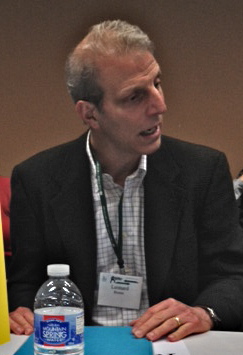 |
| Leonard Rosen |
 |
| D.M. Gordon |
I must add my fellow Fine Line Poet (www.finelinepoets.com), J. Lorraine Brown, also has a poetry collection entitled Skating on Bones that was on the Must-Read list as well. Her book was published by Finishing Line Press.
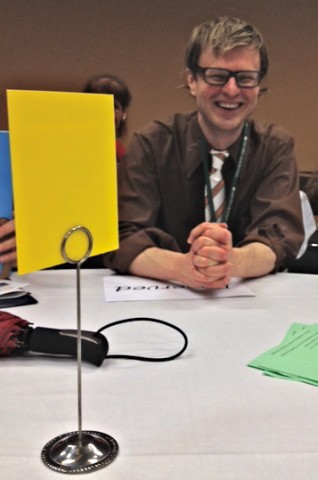 |
| Jef Czekaj |
Jef Czekaj is a force to be reckoned with. He is a cartoonist, children’s author/illustrator, and musician. Check out his Must-Read entitled New Alphabet. It is so fun! He also wrote Hip and Hop, Don’t Stop!, Cat Secrets, and the Circulatory Story.
 |
| L.M. Vincent |
And then there’s the lovely Kimberly Marcus whose novel, Exposed, explores the subject of sexual assault through the lens of a 16 year old girl, Liz. She must grapple with her best friend’s accusation against her own brother. Her novel is in free verse, one of my favorite styles to read.
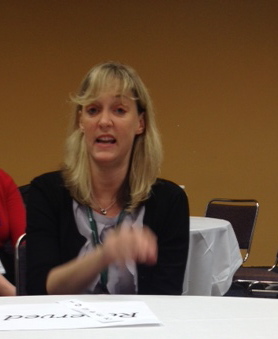 |
| Kimberly Marcus |
 |
| Laura Harrington |
If that’s not enough for fabulous choices, our last author was Laura Harrington whose award-winning plays, musicals, and operas have been widely produced in the U.S., Canada and abroad. Her first novel is Alica Bliss, and it crosses over from adult to young adult. It is a coming-of-age story about a young girl whose father is deployed to Iraq.
The May Days
What I needed was a little accountability–a wee bit of momentum to light my fire. All I asked for from my Facebook friends was for encouragement to write a page or two every day in May, with the intent of jump starting a middle grade novel. What I received was amazing–a new group. Our members are both established and newbie writers. In a matter of seconds, friends were piling on the band wagon. Soon someone suggested forming a group and, for momentary lack of creativity, we formed The May Days. Now thirty + members strong, we are working toward the same goal–word production and daily creativity. And, if it doesn’t work out now and then, we keep one another going. More than anything, I am amazed by the heart these writers. When a dear friend in our group learned of her mother’s passing last night, everyone immediately sent their sympathies. One thing we all know, solace and healing can be found in the word. Here’s to many new and fabulous creations coming from The May Days.
Hidden Treasures
 Look, this is how the miners kept their clothes.
Look, this is how the miners kept their clothes.
Library Secrets: Part 1
— Henry Ward BEECHER
Awakenings Again
For those of us who have experienced the hard winter of our souls, we dip our toes cautiously into the spring waters. Maybe we don’t trust those cold swirling ripples quite yet. As writers it may be that we’ve been waiting so long for a bite from some editor out there; we’re certain our manuscripts will never be reeled in again.
Fallen
Yes. It’s been a while again. I think this is my monthly blog. I had to share about the strange fall we’ve had. Warm now in December. A snow storm before Halloween. All the trees that had fallen are still being trimmed and gathered by the roadsides. It reminded me of a poem with the same title that appears in my chapbook, Coming Unfrozen.
The Journey
No big thoughts today, only an inspiring youtube from my lovely friend, Theresa Rizzo. Hope you enjoy. http://www.youtube.com/watch?v=6BUJdV9gS0A






